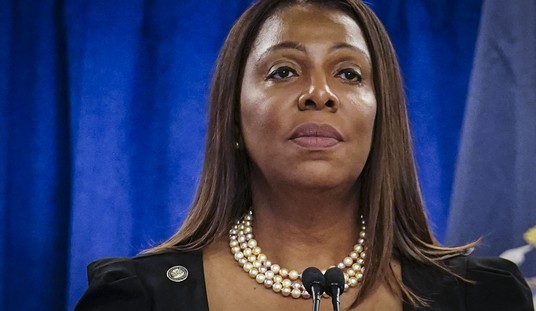The uniquely-awful Biden presidency is finally over, and the establishment media have ended their blackout of the former president’s incapacity. At last we are getting answers to the question so many of us have been asking:
Who the heck was running the country during the last four years?
Insiders and investigators have identified a cabal consisting of Barack Obama and Jill Biden; staffers like Steve Ricchetti, Mike Donilon, Ron Klain, Jeff Zientz, and the husband-and-wife team of Bob Bauer and Anita Dunn. And even—after Biden’s last debate with Donald Trump—the President’s felonious son, Hunter.
As we get more information, more names may be added and some may be dropped. But those who make the final list deserve the American people’s deepest contempt: For they have betrayed a central principle of American constitutional democracy.
This column explains the principle they betrayed. It further explains why former Vice President Kamala Harris is also on the guilty list.
“Unity of the Executive”
When delegates to the 1787 Philadelphia convention wrote the Constitution, they had to decide how to structure the executive branch. They consulted many historical models.
Well-run monarchies had a single chief executive: the king or queen. But the Founders wanted a republic, not a monarchy. Most previous republics had featured plural executives. Some, like the ancient Greek city states, had boards of executive magistrates. The Roman Republic featured two co-equal consuls. The Swiss cantons used executive councils.
But the Founders learned from history that plural executives don’t work very well. For example, Emer Vattel, the Founders’ favorite authority on international law, identified some of the results when an inattentive king turns over the government to his ministers::
Recommended
[H]is ministers are in general impatient of resistance, and cannot brook the slightest opposition:—if he surrenders to them his authority, they are more haughty and intractable than their master: they feel not for his people the same love that he feels: “let the nation be corrupted (say they) provided it do but obey.” They dread the courage and firmness inspired by virtue, and know that the distributor of favours rules as he pleases over men whose hearts are accessible to avarice.
In other words, ministers are less secure in their position than the lawful ruler, and more willing to be corrupt and tyrannical. Do you see the results in the Biden White House?
More from Vattel:
A sovereign is undoubtedly allowed to employ ministers to ease him in the painful offices of government; but he ought never to surrender his authority to them. When a nation chooses a conductor [leader], it is not with a view that he should deliver up his charge into other hands. Ministers ought only to be instruments in the hands of the prince; he ought constantly to direct them, and continually endeavour to know whether they act according to his intentions.
In other words, the chief executive has the responsibility. He has no right to shift it to others—and, by extension, they have no right to seize it.
The Founders’ personal experience confirmed the many problems with plural executives. After Independence was declared in 1776, several states experimented with executive councils. The results were not good.
Fortunately, the Founders had some positive models also. The Netherlands was then a federal republic: “The United Provinces of the Netherlands.” (Do you see the similarity to the official name of our own country?) The chief executive was a single person: the stadtholder. The single executive helped hold together the otherwise-clumsy Dutch confederacy.
Closer to home: After Independence two American states adopted constitutions with strong, single executives: New York and Massachusetts. They worked so well, that they became models for the American presidency.
That’s why the Constitution introduces the executive branch with the words, “The executive Power shall be vested in a President of the United States of America” (Article II, Section 1, Clause 1).
Notice: a President. Not a cabal.
The Founders Explain the Need for a Unitary Executive
When the 1787 convention made its proposed Constitution public, a great debate arose over whether the people of the states should ratify it. The famous “Federalist Papers” consist of newspaper op-eds supporting ratification. They were, of course, written by Alexander Hamilton, James Madison, and John Jay.
Madison briefly addressed the need for a single executive in Federalist No. 37: “[E]nergy [i.e., efficiency] in government,” he wrote, “requires . . . the execution of it by a single hand.”
But the most elaborate treatment of the subject was in Hamilton’s Federalist No. 70. It is far too long to reproduce here. But every American should read it. The gang who ran the White House during the Biden term should have read it.
Here are some of Hamilton’s points:
* “Those politicians and statesmen who have been the most celebrated for the soundness of their principles and for the justice of their views, have declared in favor of a single Executive and a numerous legislature.”
* “A feeble Executive implies a feeble execution of the government. A feeble execution is but another phrase for a bad execution . . . .”
* “The ingredients which constitute energy in the Executive are, first, unity; secondly, duration; thirdly, an adequate provision for its support; fourthly, competent powers.
* Speaking specifically of foreign and military affairs: “Decision, activity, secrecy, and despatch will generally characterize the proceedings of one man in a much more eminent degree than the proceedings of any greater number; and in proportion as the number is increased, these qualities will be diminished.”
* Plural executives “impede or frustrate the most important measures of the government, in the most critical emergencies of the state. And what is still worse, they might split the community into the most violent and irreconcilable factions . . . .”
* “But one of the weightiest objections to a plurality in the Executive . . . is, that it tends to conceal faults and destroy responsibility.”
* “[T]he plurality of the Executive tends to deprive the people of . . . the opportunity of discovering with facility and clearness the misconduct of the persons they trust, in order either to their removal from office or to their actual punishment in cases which admit of it.”
* “[A]ll multiplication of the Executive is rather dangerous than friendly to liberty.”
Think of all the faults of the Biden years, and compare then with Hamilton’s list: Incompetent administration (e.g., inflation, the supply-chain debacle). Ineptness in foreign policy. Divisiveness, fostered by the President’s speeches. Lack of responsibility (no one held accountable for the disaster in Afghanistan). Danger to liberty (censorship of books and social media, lawfare, attacks on economic freedom and, through forced vaccination, bodily integrity).
What Should the Cabal have Done?
Which brings us to the final question: When it became clear the President was incapacitated—what should those around him have done instead of clinging to power? Vattel answers in a general way: “If the imbecillity of age, or any infirmity, render him incapable of governing, a regent ought to be nominated, according to the laws of the state.”
In this case, “the laws of the state” are set forth in the Constitution’s 25th amendment. It authorizes the Vice President and a majority of the cabinet to certify the President’s incapacity so the Vice President can take charge.
Kamala Harris—and every member of the cabinet—should be asked why they disregarded this responsibility. Admittedly, use of the 25th amendment against a conscious and cantankerous President is very difficult. But an attempt—even if immediately unsuccessful—would have exposed the problem to the public, and created demand that Biden resign.
But in this case, Harris and the cabinet did not even try.
This bunch must never be allowed in government again. If not for the need to preserve historical examples, the Roman punishment also might be appropriate: damnatio memoriae.
Robert G. Natelson, a former constitutional law professor who is senior fellow in constitutional jurisprudence at the Independence Institute in Denver, authored “The Original Constitution: What It Actually Said and Meant” (3rd ed., 2015). He is a contributor to the Heritage Foundation’s “Heritage Guide to the Constitution.”
























Join the conversation as a VIP Member